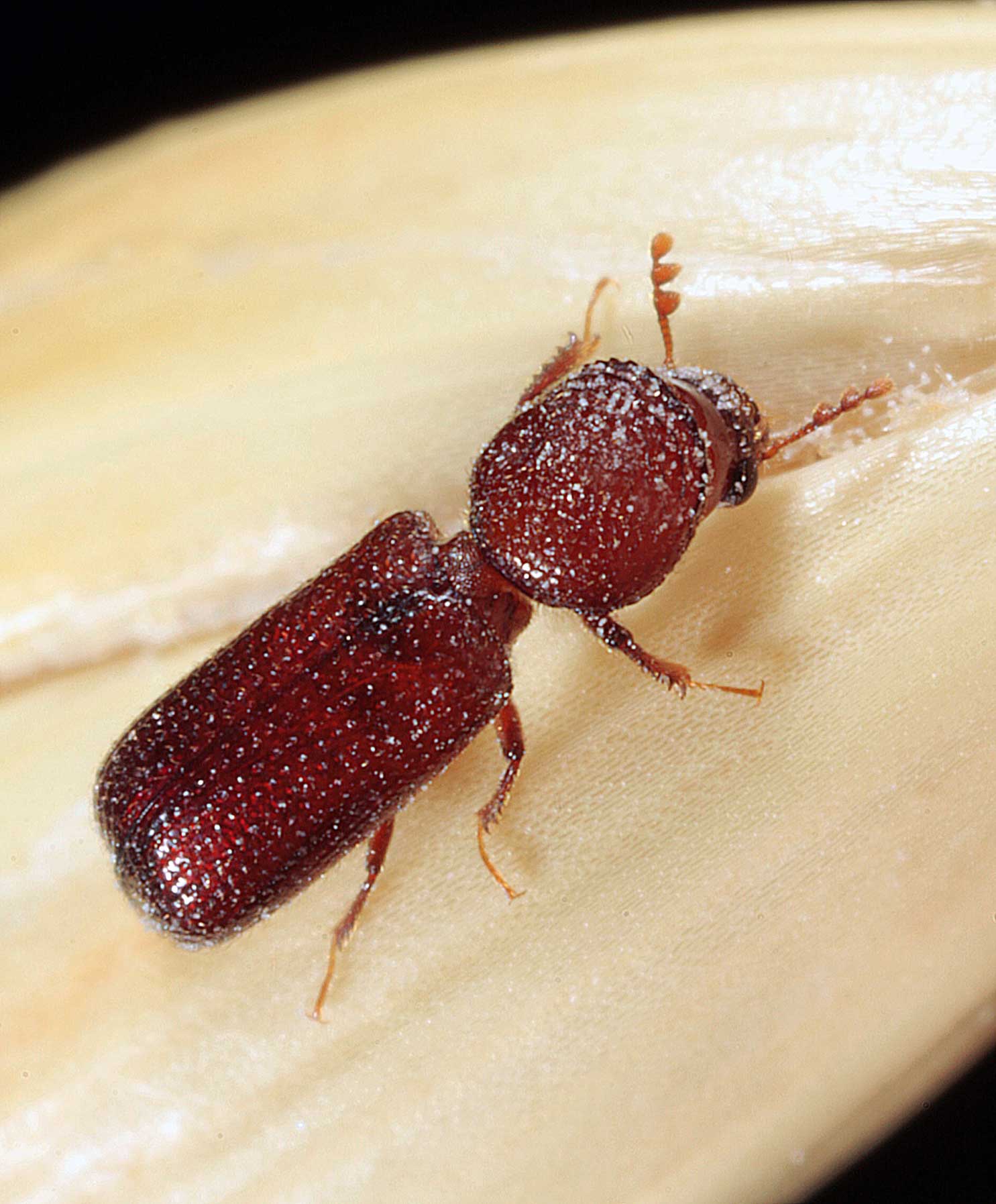Biosecurity defends key rural industry
Media Release: 30 November 2009
Australian researchers are studying genetic codes to learn how insects like the lesser grain borer are developing resistance to the world’s most widely used grain fumigant – phosphine.
 With the harvest safely stored, grain growers often take a moment to relax; but not so the scientists involved in a national research effort to keep stored grain safe from feasting insects and to maintain Australia’s hard-earned reputation as a supplier of clean, pest-free grain.
With the harvest safely stored, grain growers often take a moment to relax; but not so the scientists involved in a national research effort to keep stored grain safe from feasting insects and to maintain Australia’s hard-earned reputation as a supplier of clean, pest-free grain.
Stored grain insects are a constant threat to grain exports – worth some $7 billion each year to the national economy.
Australia offers overseas grain buyers a ‘zero tolerance’ benchmark for insect infestation and this is a key element in Australia’s international competitiveness.
However, the capacity for insects to evolve their way around the limited number of environmentally safe fumigants available poses a constant challenge – one that is now being tackled by the Cooperative Research Centre (CRC) for National Plant Biosecurity. READ MORE
Photos by: Chris Freebairn, Queensland Primary Industries and Fisheries
Instructions for downloading images
To download and save images, right-click on the link and click ‘save target as’. If you experience any problems, please contact Communications Manager, Kate Scott on 0402 299 611 or k.scott@crcplantbiosecurity.com.au
| Attachment | Size |
|---|---|
| flat grain beetle.jpg | 1.59 MB |
| lesser grain borer.jpg | 2.31 MB |
| 091130 MEDIA RELEASE_PHOSPHINE RESISTANCE.pdf | 36.64 KB |

